
I must confess I didn’t know much about Chilean food when I headed to the capital of Santiago.
I was familiar with Chilean wine, of course; as for food, Chilean sea bass was about the extent of my knowledge. Chilean sea bass, by the way, is technically not even sea bass; it’s really the commercial name given to a Patagonian toothfish that lives in the deep waters in the southern oceans near and around Antarctica.
So while some Chilean sea bass may indeed come from Chilean territorial waters, not all these come from Chile.
THE JOYS OF THE CHILEAN SEA BASS


Nevertheless, I have enjoyed Chilean seabass over the years, but I stopped eating it when stocks became perilously low because of overfishing. Fortunately, fishing methods have since improved and this is no longer an endangered species.
This fish is coveted by many chefs because it is receptive to a wide variety of seasonings and preparations. It has a great, rich buttery flavor and it’s moist, firm, smooth and tender in texture, with large flakes. You can literally feel and taste its high omega 3 oil content – which is good for the health conscious – and it remains dewy even after cooking.
NOT QUITE EXTRAORDINARY

Meanwhile, Chilean food is in a category all its own. It has neither the romance and glamour of the cuisine of its neighbor, Argentina, nor the complexity and exotic Japanese influences bestowed upon the contemporary dishes of its other neighbor, Peru. Argentina has that cult of meat, and Peru is so fluent in Asian and Andean flavors.
Chilean food does not have the “wild melting pot” of culture that fed the development of Brazilian cuisine, either. If those are your preferences, Chile doesn’t stand a chance in the gastronomy department, although it’s really beginning to come into its own.
For now, I think it’s safe to say you will not return from a trip to Chile raving about their cuisine. It is still very much in a transformational stage. The food isn’t mediocre by any stretch, but it seems to lack creativity, especially given the bounty available.
SURPRISE, SURPRISE

Or so I thought, until I discovered Borago, which is basically the NOMA of Chile. It is undoubtedly the country’s top eatery, and certainly the most creative, continuously ranking high on San Pellegrino’s list of best restaurants in Latin America and also in the list of the world’s best restaurants. Only one of two from Chile to have made it to the list. Rodolfo Guzman, Borago’s chef, an alumnus of the legendary restaurant Mugaritz in San Sebastian, Spain, is perhaps the most internationally recognized Chilean chef today.
Borago basically offers an exhaustive exploration of what can be done with native cuisine and Chilean products. The chef here is on a mission, with complete dedication to using ingredients that are 100% Chilean. But it actually goes further than this, as a meal here will take you back in time to when natives used to cook with hot stones and smoke with native woods.
ADVENTURE ON A PLATE
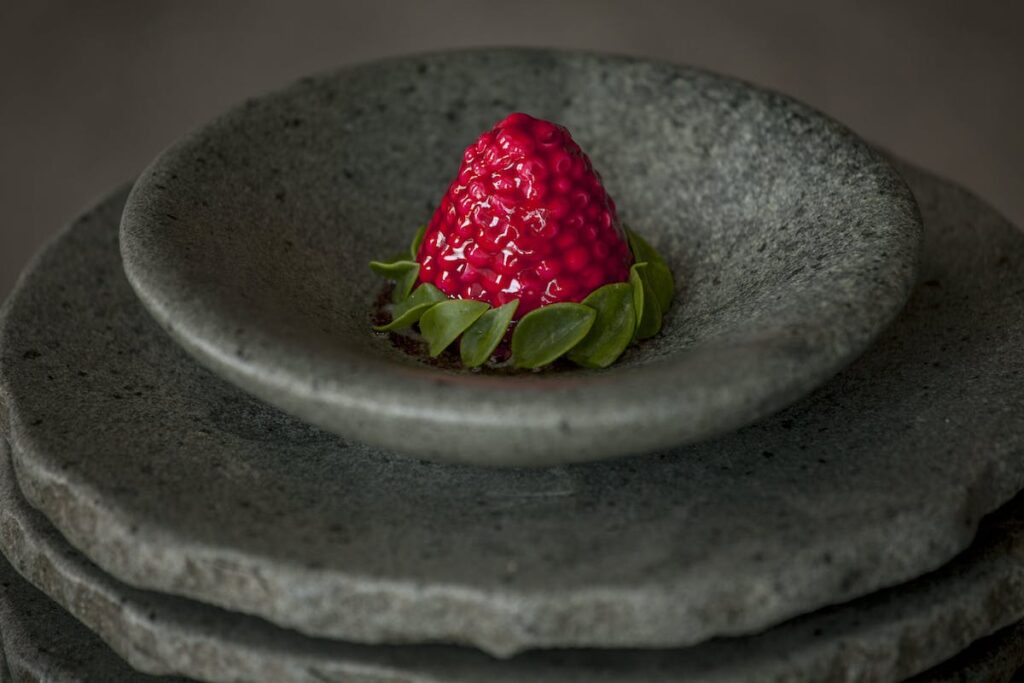
The chefs of Borago undertake endless trips around the country, foraging for the most amazing ingredients to put on a plate. Many of these were completely alien to me, including rare mushrooms from the most remote forests of Chile to seafood from the iciest Patagonian waters in the south. Occasionally, they even serve dishes with ingredients from Easter Island, guaranteeing that Borago’s menu truly encapsulates Chile’s wildest corners.
Chef Rodolfo is a humble man, and I enjoyed meeting him. He even took me on a personal tour of his kitchen. Interestingly, unlike so many kitchens of great restaurants that I have visited over the years, Borago’s kitchen was unusually quiet. There was no screaming and no flaring tempers; just whispers, focus, passion and concentration. But there was an unmistakable buzz, which I loved.
Like Noma, the Borago chefs serve the dishes themselves, and this includes Guzman; and each one is therefore able to thoroughly explain each dish including techniques and inspiration.
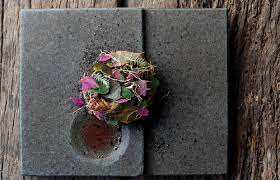
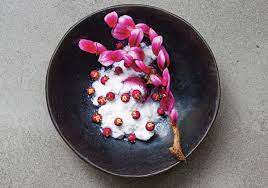
A DRAMATIC START
Our group arrived on time for our 8PM reservation. We were greeted politely and ushered to a table in the middle of the main dining room, in this sleek, sophisticated but casual restaurant in the upscale Vitacura district of Santiago.
The place was nearly empty, as dining in this town, like in the rest of Latin America, is characteristically late. It was actually a great feeling to have Borago to ourselves, at least for the first half hour, which was about the time people started making a beeline for this restaurant.
CALL OF THE WILD
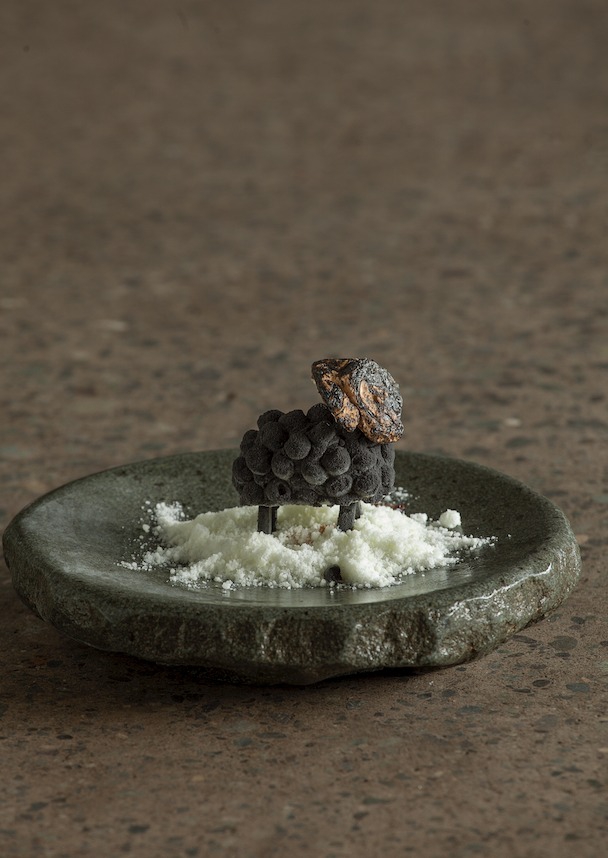
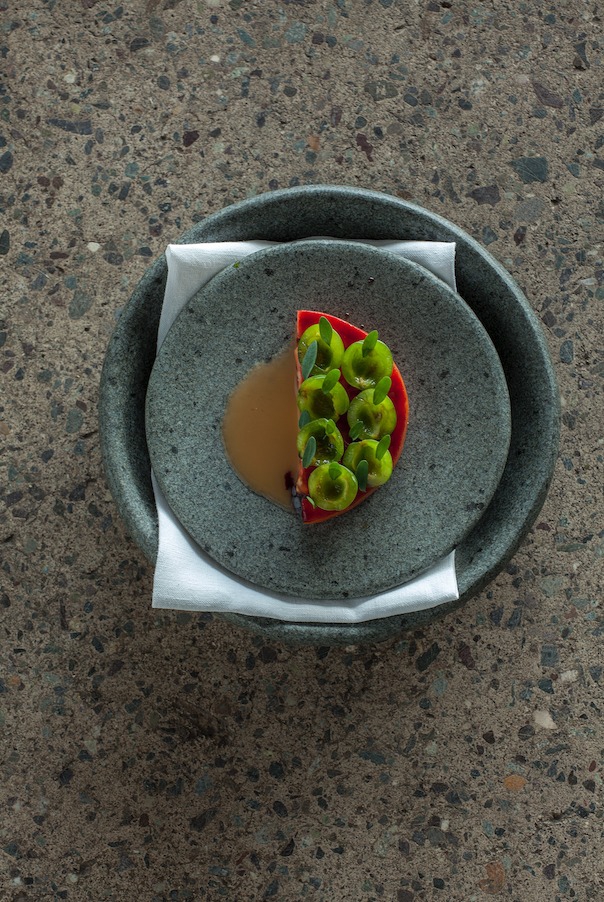
As for the eight-course Endemic tasting menu itself, it reflected the flavors, smells and textures of the Chilean wilderness, and it was definitely bold from the start. We were handed five appetizers, including pork skins and a melon jelly with golden liqueur. Each appetizer was served atop rocks, wooden blocks or tin pails, and warm bread was served with a mild “soil” pesto made of dehydrated herbs and squid ink.
On the evening we dined at Borago, there were lots of lumps of dirt and rocks on our tasting menu, that were actually pieces of smoked fish or squid ink dust. These were intended to reflect the fertile soil of the central valley or the black rocks from Chile’s many active volcanoes.
FRUITS OF NATURE


The tasting menu was offered with a wine pairing, but I opted for the more interesting juice pairing, as this was the first time I had encountered such a combination. Many of the juices were from wild herbs I had never heard of, foraged from deep inside Chile. Others were infusions of evergreen shrubs or of herbs from salt marshes, while the rest were made from berries scoured from the Andes.
These were all served in appropriate wine glasses, so that the juices resembled fine wine in looks and color. All of them were very drinkable, and many seemed to have intersecting flavors with the food. The sommelier did a splendid job with these, as these juices added another dimension to the dishes.
HIGHLIGHTS OF THE EVENING
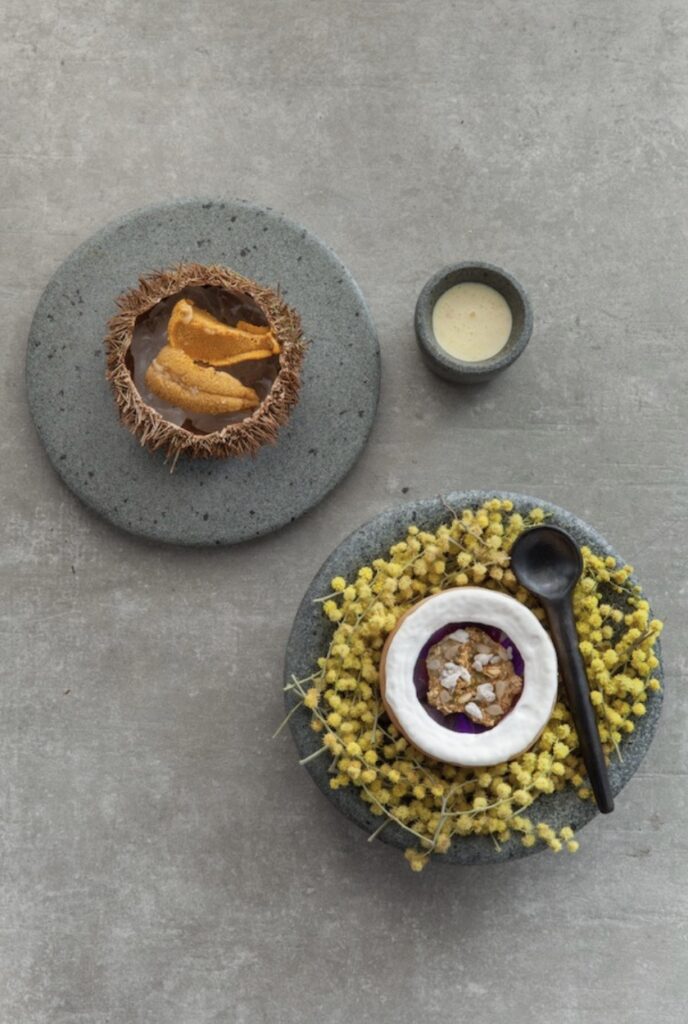

There is not much point in discussing Borago’s individual dishes as these change almost daily. However, for this evening, we had their newly foraged, unusual variety of purslane, served on the outer edge of a rock plate that was cooked straight from a grill, with yoghurt.
We also enjoyed a dish called “cremoso de isla negra,” which turned out to be a squid ink cracker dotted with goat cheese sitting atop sea asparagus. It was a delight to look at.
Later we were served huevos a rescoldo, a perfectly slow cooked egg covered in ash, reportedly from some rare chicken that lays blue eggs that are silkier, smoother and richer than normal ones.
Borago also had an outstanding veal dish that night, cooked in its own milk for 40 hours. However, the standout dish of the evening for me was a congrio frito, which is basically a crispy fried fish fillet. At Borago, these came coated in ash, with a perfect seaweed dashi broth poured over it, resulting in a wonderful savory entreé.
SWEET ENDINGS

The medley of desserts that night were inventive, starting off with something called the “rica rica de Atacama.” This was a cookie, served on top of rica rica-flavored ice cream and cracked to look like the parched earth of the Atacama dessert, but with a .soft and chewy texture. Rica rica is a strongly aromatic herb used as a local homeopathic remedy for an upset stomach. It is very citrusy, with an herbal hit that is almost like lemon verbena.
The end was equally dramatic and delicious. The chef ran from the kitchen with a plate containing several little pieces of mint meringue – which were aptly named frozen glaciers – still smoking from the infusion of liquid nitrogen.
We were instructed to pop these into our mouths immediately, and not to even waste time taking photos (I did so anyway). These melted in my mouth and then turned my breath cold and white until smoke rolled out of my nostrils like a fire breathing dragon. Hilarious and certainly memorable.
Dining at Borago is so unique because you are actually able to sample food that cannot be found anywhere else in the world. With its sophisticated and creative cuisine, Borago is typical of the new Santiago. It is certainly the ultimate out-of-the-box dining experience in Chile, if not in Latin America.
Read more about the finest restaurants in the world in Travelife Magazine.
Photos courtesy of Borago Restaurant



